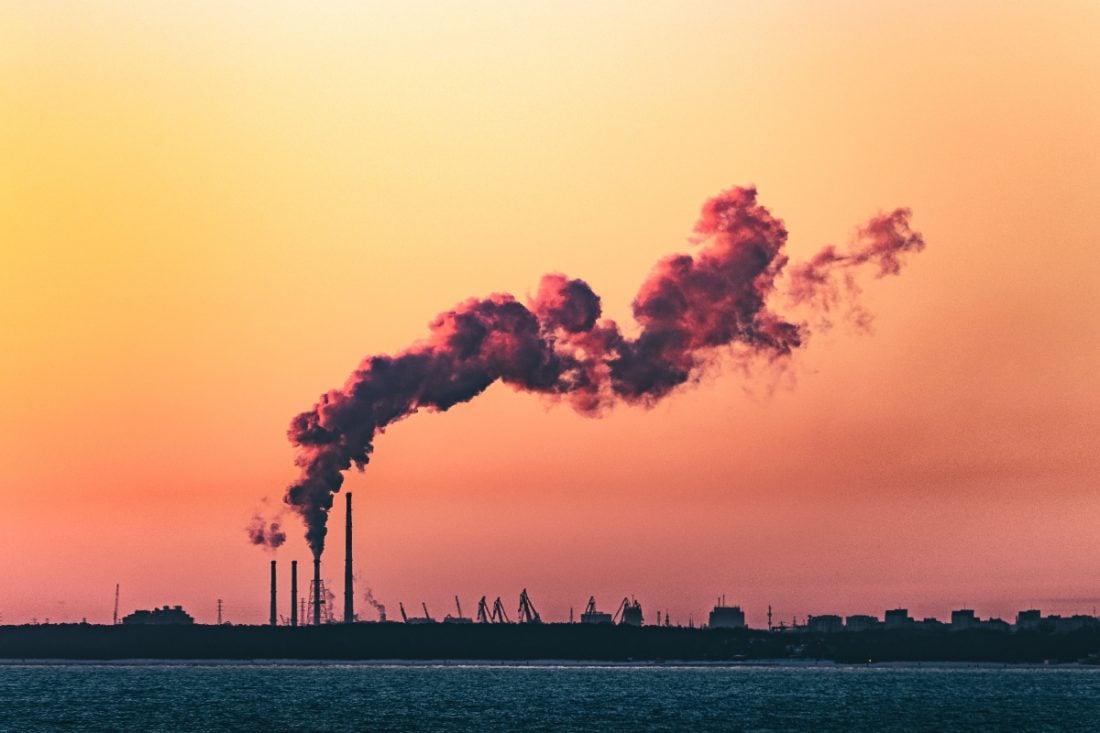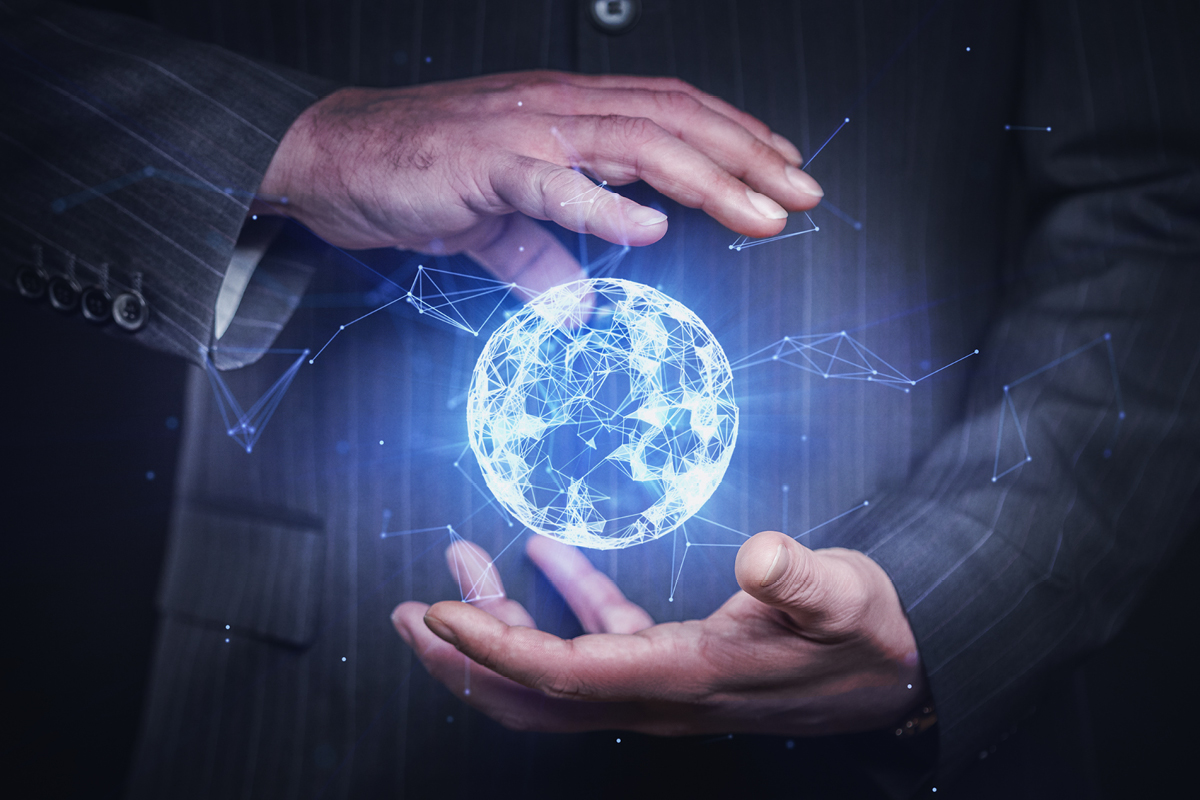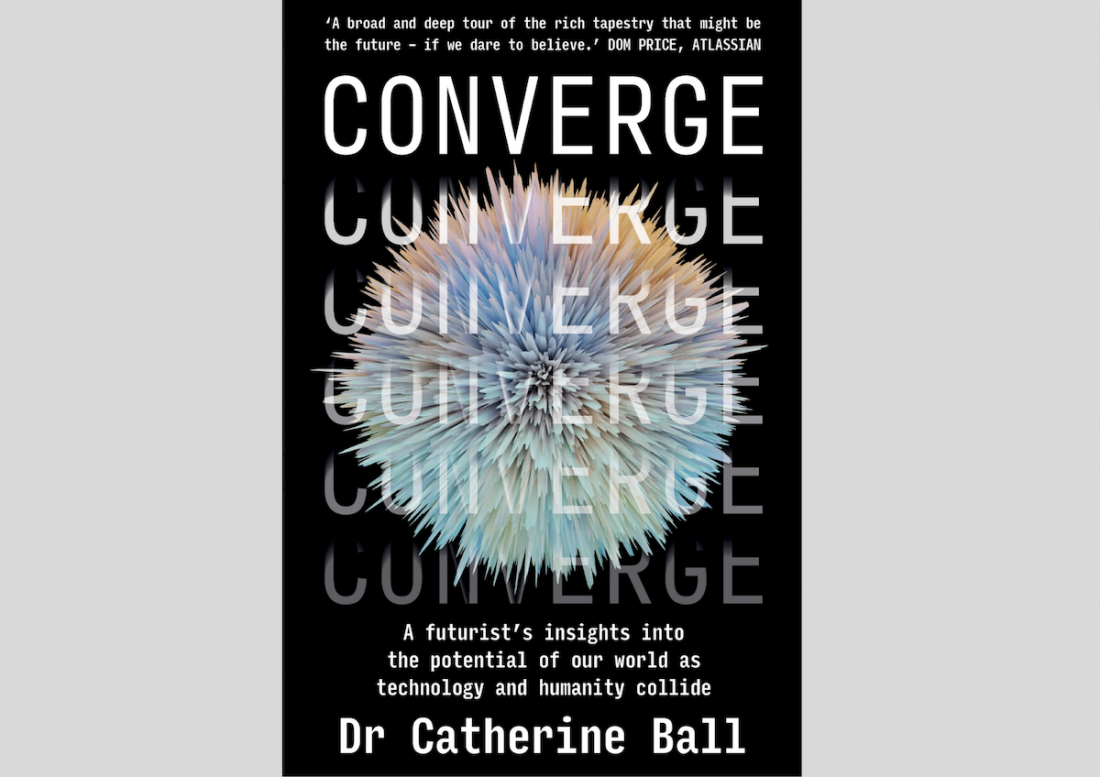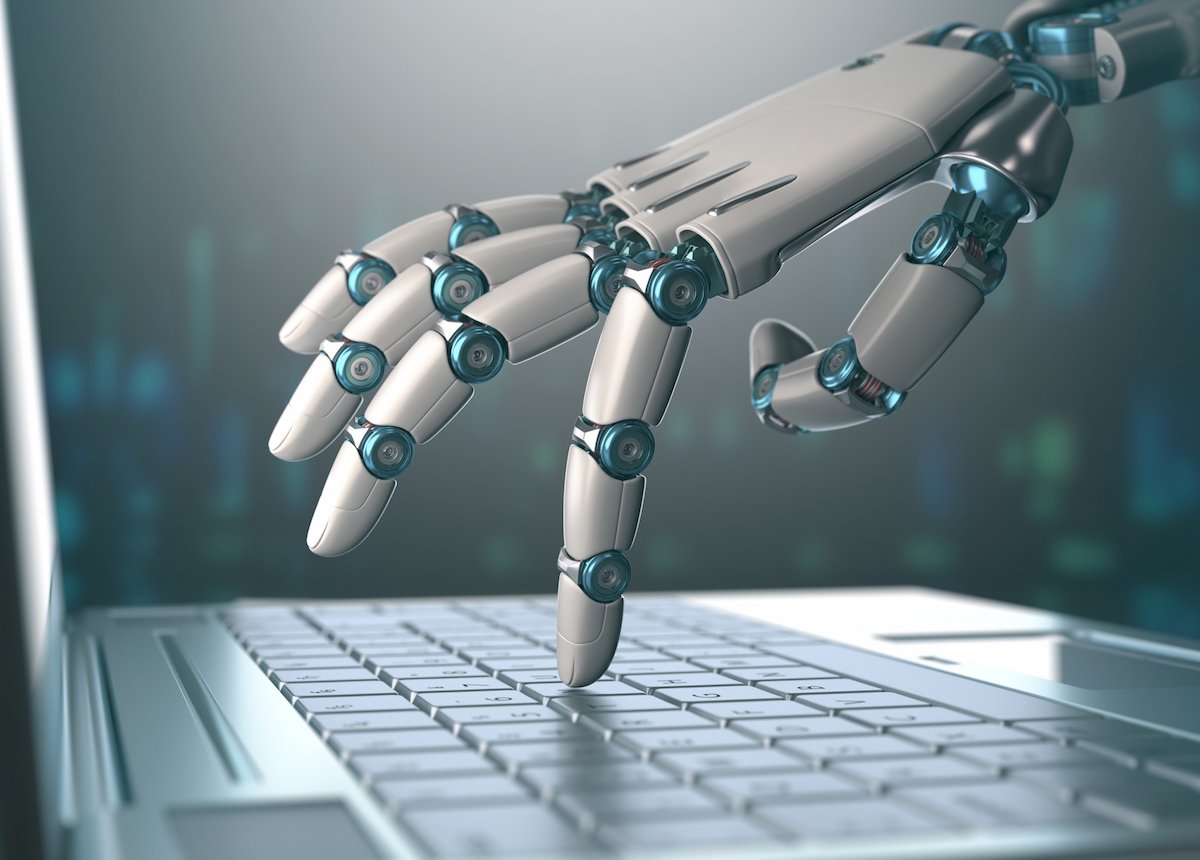The record scratches to a halt. Hang on a second – you’re saying we are in the fifth industrial revolution now? What happened to the fourth – the internet of things, connectivity, sensors, smart cities and digital twins? Are we past that already?
Let’s check backwards before we move forwards. These are the industrial revolutions we have already had:
- 1.0 was around the 1780s, when steam power was really cranking and making machinery move.
- 2.0 was around the 1870s, when mass manufacturing and division of labour was applied.
- 3.0 started around the late 1960s and was the time of computing.
- 4.0 was around the year 2000, when sensors started getting smaller and more connected. It was dubbed the ‘internet of things’.
Industry 5.0 will be about the robotics we put inside ourselves – bionic augmentation and the ‘internet of bodies’. It will be powered by purpose, not just profit.
It is our chance to take everything we’ve learned from all the technologies we currently have and make tech work for the good of humanity and society.
Technology exists for us. Unless we start owning this conversation, we’re at the top of a slippery slope that leads to being owned by technology and the people who create it.
We now have business and investing models that claim to be better for the environment, but there have been no real changes to laws – such as the Corporations Act 2001 in Australia – to incentivise board directors to challenge the current shareholder-return, profit-driven linear business models.
This means we must be early adopters of future-focused business models and lead the change. We must create businesses (and jobs) around this new economic approach, and build sovereign capability and supply chains.
People talk about environmental, social and governance (ESG) investing as a platform for ethically driven business growth and sustainable long-term investor returns. This has been the modus operandi of many small businesses for many decades – it’s not new.
However, it seems environmental impact and social impact (covering issues such as modern slavery) are only talked about on the fringes and are not part of the DNA of large businesses.
Our retirement funds are invested in some of the businesses that are seemingly the slowest to change. Is this what we want? If not, what can be done to incentivise those lagging organisations to get up to speed?
The circular economy and “polluter pays”

The “circular economy” is a mighty buzz phrase. It’s a hugely optimistic approach and is often linked to sustainable development.
It’s where products and materials remain in use (rather than going to landfill), waste and pollution are removed, and planet Earth is regenerated. It is based increasingly on renewable energy and materials, and accelerated by digital innovation.
Rather than only being concerned with reducing the ecological and environmental impact of industry, it aims to transform the economy to be regenerative and create new work practices and culture.
My answer to these questions is that we don’t know: we don’t have the data or evidence yet. My heart says we have to try for a circular economy, though – we can’t keep going the way we have been.
To do so would mean the end of society as we know it within my children’s lifetimes. The old adage remains true, and it is worth repeating here: “We don’t inherit the planet from our parents, we borrow it from our children.”
Some might argue that this planet’s resources are not the only resources we are going to be using this century. We already have companies preparing to mine the moon and asteroids; off-planet resources have stirred the entrepreneurs in Silicon Valley to create investment opportunities and generate startup appetite.
Is the circular economy out of reach with current technologies, given our planet’s finite resources and growing human population? Have we passed the tipping point of sustainable consumption?
The Japanese Aerospace Exploration Agency (JAXA) has landed a drilling sampler on an asteroid, taken a sample, and landed it back on Earth to analyse the iron ore contents. NASA’s Artemis project is headed to the moon this decade, which is causing a public resurgence in love for space missions.
However, there are no formalised global treaties or trade agreements based on the resources “off world”. And, really, can we stretch the resources argument that far to insist on a consumerist approach?
Resources on Earth remain finite and increasingly contested, especially geopolitically. The old favourite phrase “reduce, reuse, recycle” has really only perpetuated processes such as plastic production, as the recycling element seems to give people licence to just keep using it.
Ironically, the biggest problem with plastic is that it’s very good at its job. Plastic persists; it doesn’t decompose. This is causing hell in marine environments as plastics break down into smaller and smaller pieces, entering the food chain and killing wildlife, and even ending up in us.
On average, experts estimate that each of us eats a credit card’s worth of plastic (approximately six grams) in the form of microplastics each week. This amount of plastic is worrying enough, but once it becomes nano-sized, what is it going to do to our health? We don’t actually know, but scientists are predicting it won’t be good.
There are lots of plastic remnants in our agricultural soils from things such as fertiliser pellets. Plastic disrupts the guts of micro-organisms such as nematodes and causes an increase in carbon released from the soil. One extra thing we don’t need in the climate emergency is another nonpoint source of large-scale carbon emissions. Have plastics been a distraction from the climate emergency, or are they inextricably linked? I believe the latter.
We need to deal with the source of the issue that created this plastic monster: the business models allowed to thrive under our legislative framework that don’t consider environmental protection to be as important as fiduciary duty and solvent trading.
The producer has not been paying. There should be a financial cost for making profit at the planet’s expense in an unsustainable way. The “polluter pays” principle has never really been taken seriously as part of an economic lifecycle analysis. This could be about to change.
“The way we’ve always done it”

Doing business with a “this is the way we have always done it” mentality won’t work going forward. The boardrooms of the world are concerned with risk and financial solvency, but most do not have innovation subcommittees.
A recent Australian Institute of Company Directors study suggested that fewer than three per cent of company directors have a STEM background. In an increasingly technological world, this is a massive problem.
If people at the top level of corporate strategy can’t engage properly with STEM and the new digital economies, what does this mean for the future of the world’s stock markets?
We need to make sure board diversity reflects what the future is going to look like, not what the world looked like 20 years ago. Diversity indices around gender are still subpar globally, but when you also consider STEM knowledge, this uncovers a huge opportunity.
I have already moved my banking and superannuation to organisations that fit with my worldview and morals, and I’m not the only one. Industry 5.0 will see a rise in “profit with purpose” business models, as well as third-party accreditation schemes and expectations around industry best practice.
Associations and industry bodies – as well as standards bodies, including the International Organization for Standardization – are creating aspirational standards schemes designed to encourage organisations to consider purpose as well as profit. It seems that if you build targets in an industry, people will aspire to meet them.
It has been rare in the recent history of the corporate world to see more than just one or two companies take the lead; the rest are followers. We have seen this with carbon footprint calculators in annual reports, modern slavery law, and post-pandemic rushes to sovereign supply chain management.
Conservative, slow approaches to change will not survive the advent of exponential technologies and Industry 5.0 – customers will march with their feet (and their money).
Things happen fast in Industry 5.0. This means that regulation and laws lag behind, and it’s difficult to have them approved ahead of widespread adoption.
The brewing legal and regulatory fight between Uber and some governments around the world never eventuated because the Uber delivery boat had sailed. Uber got what they wanted, which was to operate unhindered.
There was backlash against Uber’s expansion into underprepared markets such as Australia; for example, where I worked in 2015, we were told not to use Uber for work purposes, since it was believed the Uber drivers – and therefore the travel – wouldn’t be insured.
Ultimately, though, companies like Uber don’t actually want drivers – they want driverless vehicles. Drivers are the least reliable part of the operating process, and some software service provision apps are built for a time when humans are no longer part of the front-end of the business delivery team.
In 10 or 20 years, we may not even own our own cars – maybe we’ll rent them when needed, or hire driverless vehicles.
This makes me wonder why we’re not creating smart cities and designing new buildings that take the key trends and technological capabilities of Industry 5.0 into account.
What will the car parks being built in 2022 actually be used for in 2035? Can they be built with flexibility in mind? Could they help house the homeless and vulnerable in our cities, perhaps?
Some charities already do this in large car parks in city centres, such as the Australian not-for-profit Beddown. Temporary beds and infrastructure are brought in after hours and the spaces are transformed into safe, private sleeping areas.
Charities such as Orange Sky Australia have been growing their laundry services to homeless friends across the country and are well funded and supported operations. They use spaces such as car parks to offer free laundry services from the back of a built-for-purpose van. These types of charities have many generous corporate sponsors and supporters.
The future of work

The future of work and business are areas of great interest in the futurist sphere. What will the office of 2025 actually look like? Some imagine offices will be divided into smaller, personalised rooms, with more fresh air and natural ventilation, less hot-desking and fewer open-plan spaces.
COVID-19 and Industry 5.0 may be the death knell of the open-plan office – which is great news for me, because I have a voice for theatre and used to feel totally hamstrung by large, open workspaces.
Architects and designers should be considering how buildings can be designed to fight obesity (such as through better access to green spaces, nice walkways and cycle tracks) and create positive spaces that promote good mental health (such as through providing art spaces or social, communal space), as well as collaborating to plan healthy buildings fit for the next pandemic (for example, ones with windows that actually open, providing better airflow).
Former Lord Mayor of Sydney Lucy Turnbull has also highlighted the need to design liveable cities to be safer for women.
We now have an emboldened attitude towards fully flexible working conditions. Just before the 2020 lockdowns in Australia, I had a friend working for a large bank who begged to work from home on Fridays – she had young children, and the time saved commuting and organising child care would greatly benefit her.
She begged and begged for weeks with no response – and then suddenly the pandemic was upon us, and she was given permission to work from home, no problems.
It took the pandemic to force management to accept that they could actually trust people to work from home, and in fact to be even more productive. One thing for sure is that office work is going to undergo a hysteretic effect: it will never be what it was now that we know it can be different.
Industry 5.0 could foster flexible business practices that help women and working parents all over the world live happier and healthier lives. We know, on average, women around the world retire with much less in the pension pot than men (some 30-to-40 per cent less according to the World Economic Forum).
This is now causing ripple effects that are tipping older women into poverty. With ever-improving healthcare increasing life expectancies, our pensions will need to stretch further.
One possible solution is a universal basic income or some other form of improved financial support, which would allow women to take career breaks to raise children without being disadvantaged in retirement.
Imagine the difference it would make if women were properly financially supported when they needed it most; if rewards based on key performance indicators (KPIs) were not affected by terms of parental, family or carer’s leave; if superannuation was paid during periods of unpaid leave; or if other types of leave, such as menstrual leave and domestic and family violence leave, were standardised.
During the COVID-19 pandemic, the Australian government allowed people to access two lots of $10,000 from their superannuation. Many women who were trying to escape violence took advantage of this and were able to move out and away from danger.
However, the consequence for those women – who are already disadvantaged in terms of their superannuation – is that they now have even less in their future savings pot. What if those women were given grants instead to save their lives and those of their children?
Expectations around work–life balance are being challenged in our post-pandemic world, and there are some radical changes coming to our standard working week. In the past, in many companies and cultures, overtime had become standardised, and there was competition among colleagues to do the most unpaid work.
In Japan, a term was even created for the young people who literally worked themselves to death: karoshi. But it seems that the tide may have turned, and the very notion of unpaid overtime is now seen as toxic in many workplace cultures. This change of opinion was always coming, but the pandemic accelerated conversations about not just what work–life balance could be but what it should be.
In some countries, such as Sweden, people are hired for five days per week but only work four, with the fifth day spent relaxing their neurons and their bodies, and getting inspiration for the next week. New Zealand Prime Minister Jacinda Ardern is also a proponent of the four-day work week.
Imagine if we could all work a four-day week, and then spend one day learning about new technologies at TAFE or university? This would add value to the individual, the company and the country, not to mention supporting the struggling education sector.
Some Scandinavian companies have been known to have desks automatically lift up so their users can’t reach them after 5pm! In many other countries, people are expected to do a five-day fortnight in the office and work the remaining days remotely from wherever they like. In London, people who are working in the office on a Tuesday, Wednesday and Thursday have adopted the nickname ‘TWaTs’.
The idea of trust in the workplace, and KPI-driven performance rather than just hours on the clock, has been an ideal for a long time. The pandemic finally lit a fire under some managers to actually trust their employees to perform while working remotely, though the cynic in me wonders whether this will last unless there is a legal reason for organisations to maintain this.

This is an edited extract from Converge: A futurist’s insights into the potential of our world as technology and humanity collide by Dr Catherine Ball.







